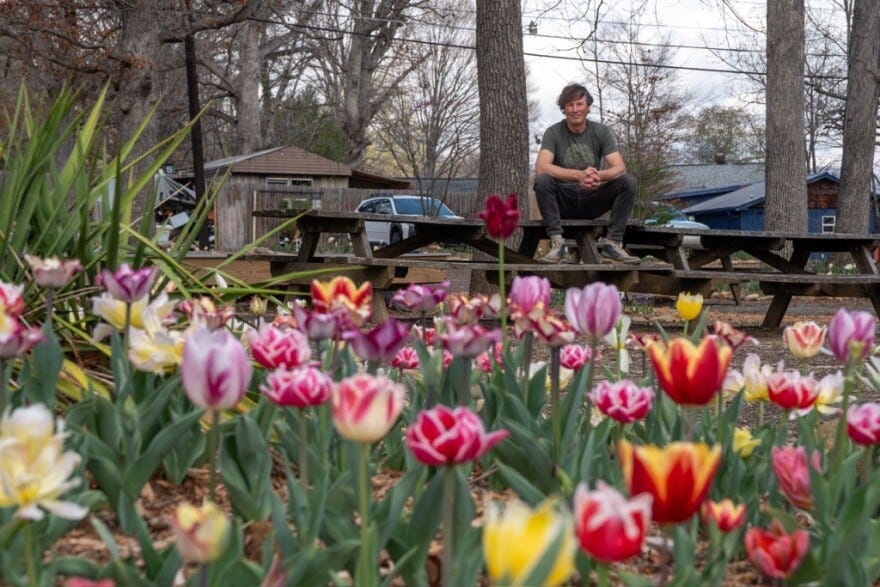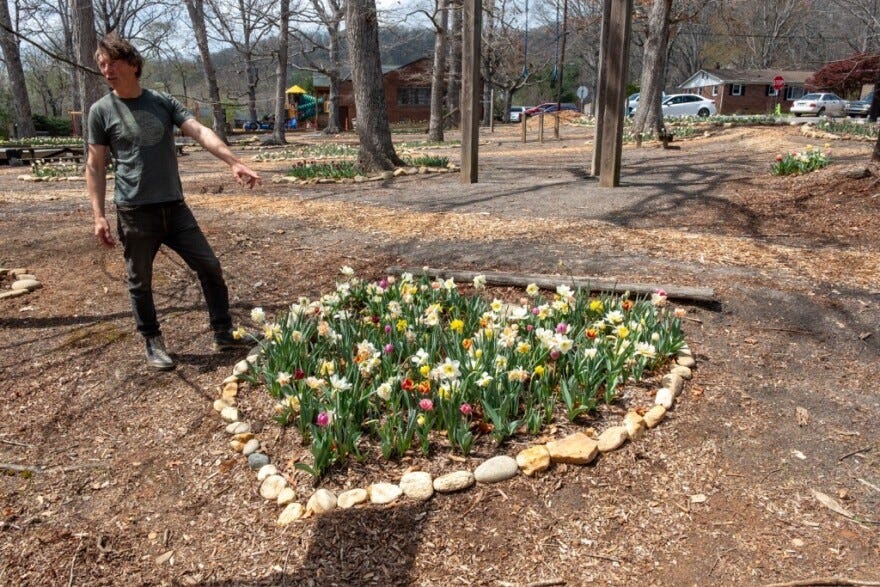Local Communities Rallying in the Wake of Destruction is Good
Tulipmania redefined in Swannanoa, North Carolina
When we think of tulips and the Netherlands, our minds often gravitate toward the infamous "Tulip Mania" of the 1630s—perhaps history's first documented speculative bubble. This irrational exuberance and market inflation eventually collapsed catastrophically, but what persists is the enduring cultural association between the Netherlands and the beloved tulip. Centuries later, this flower plays a role in the post-disaster recovery of Swannanoa, North Carolina.
Before we get to that, let’s talk about a person and a company.
Marco Rozenbroek is everything you would want as a member of your community. He’s a member of the community board, trying to bring in business for “downtown” Swannanoa, he helps manage the local library and maintain the local park. Working with the board they put on festivities that tie the community together and promote local efforts.
Dutch Grown is a family owned and run company in the Netherlands that was founded in 1882 and is “one of the oldest and most respected wholesale flower bulb exporters in the Netherlands.” The current owners, Ben and Pete Rotteveel, oversee an operation that grows all its “high-quality flower bulbs” on its farm in Voorhout, but maintains a warehouse states-side in Michigan.
And so our story begins…
On December 18, Marco posted on the Friends of Swannanoa, NC Facebook group page:
“That was a great day of planting the spring garden at Grovemont Park, Swannanoa. Tomorrow, Thursday, we will start at 8:30 again. Anybody who wants to be part of the Swannanoa Beautification Team, come on over and plant some bulbs together, meet some new neighbor friends, and let’s beautify our neighborhood together!!!
Hope to see some of you tomorrow. Thank you.”
It was a bleak part of the North Carolina winter, and it came on the tail of Hurricane Helene. But thanks to Dutch Grown Marco had 10,000 bulbs on hand. He had used Dutch Grown for his personal garden but in the wake of the hurricane his scope was much larger.
Ben Rotteveel recalls, “Marco Rozenbroek reached out to us via email and included photos of the devastation. While we were already aware of the impact of Hurricane Helene, these images were truly heartbreaking. He shared that the community is working tirelessly to rebuild, with much of the effort being carried out by dedicated volunteers.” Both he and his brother, “immediately agreed to make this donation without hesitation.”
It wasn’t just the aforementioned tulips, the donation included daffodils, alliums, and peonies. But how to execute? Isn’t that always the question? Rozenbrook ended up working with Warren Wilson College student, Halsey Congleton, who designed the layout for the planting as a student project. A pivotal tiller was donated from another local resident, not to mention the groups who did the actual planting.
Next came design. Walkways made out of donated woodsheds and a particular installation featuring tulips arranged in a heart shape encircled by river stones.
Coming when it did, this floral project resonates deeply with locals. Said Clare Duplace, who visited the park with her six-year-old son:
"Living in Swannanoa is like living in two worlds. Every day you're seeing the devastation. But then you come to a space like this and you see all these flowers and the rocks placed so beautifully and it makes this space feel like a coming home. It's really beautiful."
This sentiment echoes how spring's arrival has coincided with other recovery milestones. The historic Biltmore Estate now welcomes visitors to its 8,000 acres adorned with 50,000 tulips, 14,000 daffodils, and 1,000 hyacinths. The North Carolina Arboretum has resumed its programming (including contemplative forest bathing experiences among cherry blossoms!) and over 75% of the area's hospitality businesses have reopened.
From the irrational exuberance of 17th-century Tulip Mania to the rational exuberance of 21st-century disaster recovery, these flowers have come to embody humanity's remarkable capacity for hope and renewal. Beauty out of disaster is a good thing.





so encouraging to witness beauty amidst the flotsam and jetsam of our chaotic world1! You're right! It's a good, no, a wonderful thing!